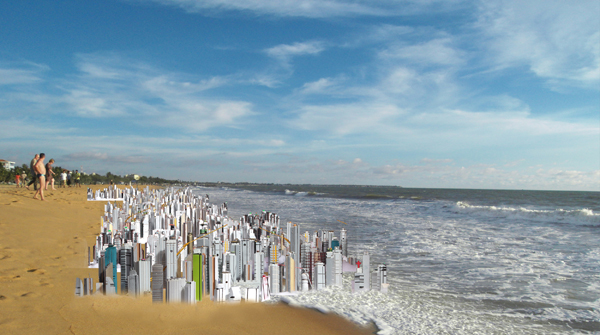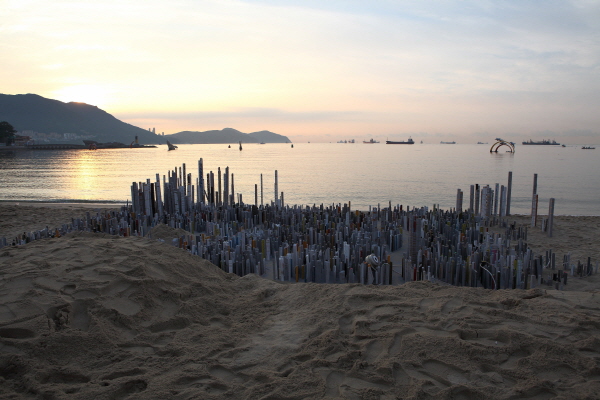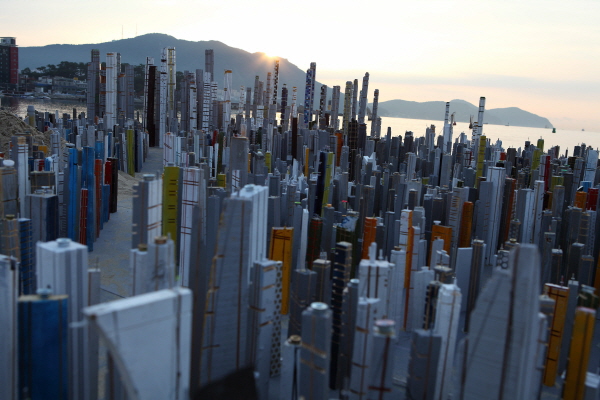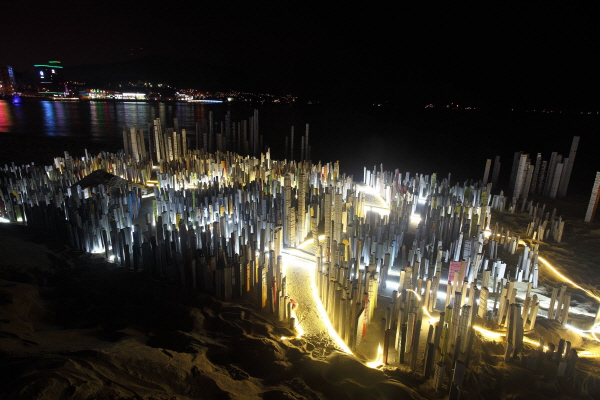|




Memory of Future-city
10×5×0.7m, dimensions variable
mixed media
The work is rooted in and explores the specific properties, histories and tradition of the city. The artist believes that memories of the past and our imagining of the future are intimately linked to specific attributes of the urban environment. While our memories conjure the past we cannot quite know how our present will one day too be remembered and thus transformed. ‘Memory of Future-City’ depicts a beautiful panorama of Songdo’s past, future and its current transformation under the pressures of urban development.
Urban development has overwhelmed the idiosyncrasies of history and tradition animating the energy of the city. An uninhibited push for progress, population growth and society’s changing needs along with additional societal changes have all contributed to the transformation of the city. Many sites and sights throughout the city have been overpowered and replaced by new construction. Skyscrapers of enormous scale have dwarfed the old urban structures and have presented themselves as the supposed new monuments of the city of Busan.
A city must be true to and reflect its unique nature, its traditions and social makeup. Busan however has been subjected to urban and architectural standardization with large, generic apartment building being built throughout the city—erasing its traditional character and obscuring its specific histories.
Haeundae beach and Dongbaek Island, once symbols of Busan, have lost their unique aura, now overwhelmed by gigantic buildings erected throughout the area. Songjung and Gwangan overflow with commercial signs and buildings. Even in Songdo, which has not been slated as a development area, financial investments in development projects are currently being advanced, developments that will take similar form to other banal construction in other sites throughout the city.
‘Memory of Future-City’, a diorama of the current state of Songdo, delivers a warning message, reminding us that forceful development will have detrimental and irreversible results. The installation on the shore, at the water’s edge allows the audience to experience the tide repeatedly wash through this miniature city made of repurposed lumber and recycled wood. The scale buildings on this border keep appearing and disappearing, washed over and revealed with the natural cycle of the tides.
|